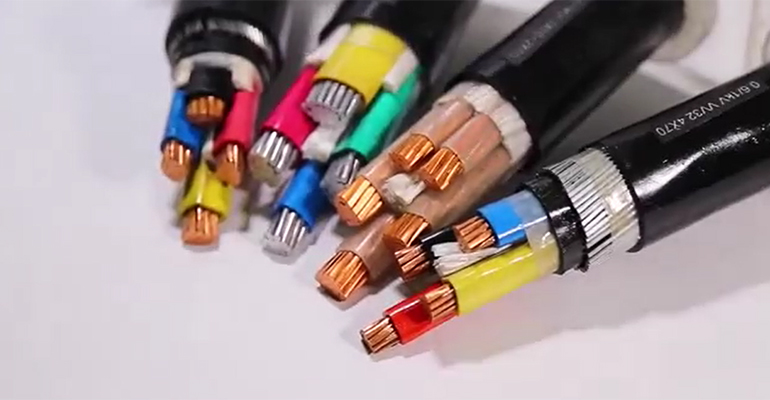- Offices Time:24 Hours Online
- Email:[email protected]
- WhatsApp:+8618339938759

Posted on October 20, 2022
The difference between armored and unarmored cables
There are many different structures and uses of cables. According to the scene where the cable is used, in the process of manufacturing the cable, the structure of the cable will be designed to a certain extent. In order to meet the needs of users, armored cables also appear, then the following Let’s take a closer look at armored and unarmoured cables!
Armored cable: Metal or other materials are added to the outer insulating layer of the cable to protect the cable from mechanical force, chemical gas corrosion, etc. This layer is the armoring layer. The armored cable has a reinforcing layer on the surface, which is suitable for use when buried underground, but armored cable is required for direct burial and laying.
Unarmored cable: A cable without armor, with a sheath or other protective layer, can also protect the cable insulation. It is just that the mechanical design tensile force and pressure to be endured are not as large as those of the armored cable. It is not an unprotected cable. The surface of the unarmored cable is not reinforced. Therefore, we generally cannot bury it in the ground. But other situations are generally analyzed using unarmored cables.

1.What are the differences between armored cables and non-armored cables?
(1) The structure is different. The armored cable is made of conductors of different materials through the metal sleeve, which can be bent when used, while the non-armored cable is made of multiple conductors and insulating protective layers, which can transmit power.
(2) The classification is different. Armored cables can be divided into three types of cables: steel tape, thin steel wire, and thick steel wire. Non-armoured cables can be divided into flame-retardant rubber-sheathed cables, power cables, communication cables, optical fiber cables and other cables.
(3) The scope of application is different. Armored cables are used when buried. In direct burial and laying, armored cables are required. Non-armoured cables cannot be used when buried, and in other cases, non-armoured cables are used.
(4) Different uses. The armored cable has a mechanical protective layer that can be superimposed on the cable of any structure to increase the strength and prevent the cable from being eroded, and is suitable for direct burial in rocky areas. Unarmoured cables can be used for television, electronics, fiber optics, etc.
2.What are the advantages of armored cables?
(1) It can use the mechanical protective layer of the armored cable on the cable of any structure. It can enhance the mechanical strength of the cable, and has the effect of anti-corrosion, it can avoid mechanical damage or corrosion, so as to design the wire and cable. It can be laid by any method, and the armored cable with steel tape is laid straight, and it will bear an external force in the horizontal direction. And the steel wire armored cable is installed in vertical installation positions such as shafts.
(2) And after the armor layer is added on the cable, its tensile strength can be enhanced, and its strength will also be enhanced, thereby enhancing the mechanical use time. And the resistance to external force of the armored cable is also particularly good, which can avoid heavy to be bitten. And its armor can be grounded for use, which can protect the cable.
Post categories
Most Popular Posts
-
The 136th Canton Fair welcomes you to participate!
October 12, 2024 -
High temperature cable introduction
July 26, 2024 -
Kenya Power and Energy Exhibition 2024
June 11, 2024 -
Introduction of rubber sheathed cable
June 5, 2024





